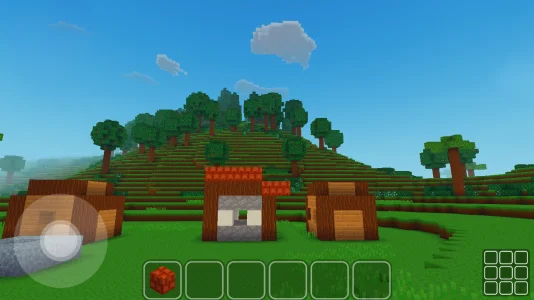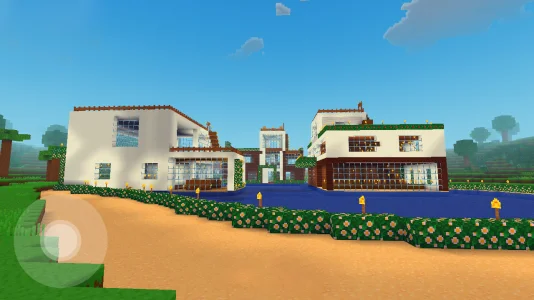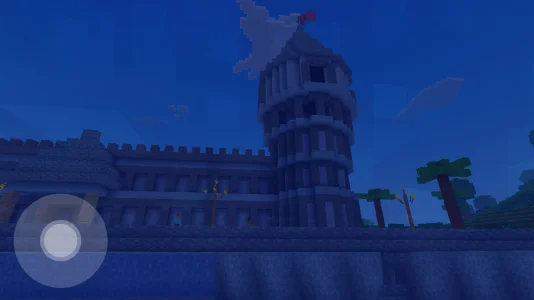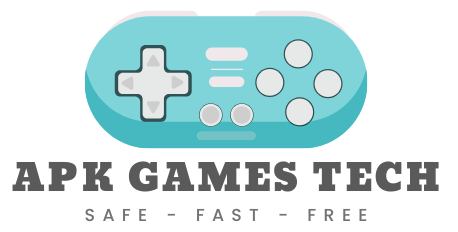Download Block Craft 3D MOD Free APK
*Block Craft 3D* is a sandbox simulation game developed by Fun Games For Free and published by Wildlife Studios. The game’s central concept is creative construction in a non-violent, open-world environment where players craft and grow villages. Emphasizing a pacifist design, it omits combat and survival mechanics, focusing the gameplay entirely on building and social interaction. Players can construct a variety of buildings, adopt pets, and visit the creations of others in a multiplayer mode that supports cooperative assistance.
Screenshots



What is Block Craft 3D?
An In-Depth Look at Block Craft 3D: The Mobile Sandbox Experience
Block Craft 3D represents a significant title within the mobile sandbox genre, offering players a pixelated universe centered on creativity and construction. Developed originally by Fun Games For Free and now under the stewardship of Wildlife Studios, this game provides a casual, non-violent alternative to other block-based adventures. This analysis deconstructs its corporate history, gameplay mechanics, technical specifications, and monetization strategy, providing a comprehensive overview for prospective players navigating the Android ecosystem.Corporate History and Development
The game's identity reveals a common narrative within the mobile gaming industry involving corporate acquisition. Block Craft 3D was originally developed and published by the studio Fun Games For Free, which holds the copyright to the title. Its initial launch occurred on the iOS platform on July 11, 2015. Subsequently, the game was acquired by Wildlife Studios, a major Brazil-based publisher with a global presence. This transition positions Block Craft 3D within a larger portfolio of high-performing mobile games, including titles like Sniper 3D and Tennis Clash. Consequently, Wildlife Studios is now listed as the primary developer and publisher on major storefronts like the Google Play Store and Apple App Store, guiding the game's continued development and commercial strategy.Genre and Audience Analysis
Block Craft 3D is classified as a hybrid-genre title, blending elements of Simulation, Sandbox, Role Playing, and Casual games. The core experience is a non-linear sandbox environment where players simulate the growth of a virtual village, with light role-playing elements in character customization, all presented through accessible, casual gameplay. A notable aspect is the discrepancy in age ratings between platforms. The Apple App Store assigns a 4+ rating, while the Google Play Store designates a Teen rating. This difference stems from platform policies regarding user-generated content (UGC). The game's multiplayer feature, which allows players to visit worlds created by others, introduces the potential for exposure to inappropriate content, making the Teen rating a more cautious assessment of the risks associated with an open online community.Deconstructing the Gameplay Mechanics
The design philosophy of Block Craft 3D diverges significantly from its genre counterparts by prioritizing a peaceful, stress-free environment. The gameplay loop is built entirely around creative expression, community interaction, and construction, deliberately omitting combat and survival elements commonly found in other sandbox titles.The Core Loop: A Pacifist's Creative Outlet
The primary objective for any player in Block Craft 3D is to construct and expand a village or to engage in free-form building within an unlimited open world. The game's defining characteristic is its complete absence of hostile mobs, health meters, or hunger mechanics. This pacifist design ensures that the player's focus remains solely on architectural creativity, allowing for the construction of everything from simple houses to complex replicas of famous landmarks. This design choice is intrinsically linked to the game's freemium model; by removing survival-based progression, the central challenge shifts to the acquisition of diverse building materials, many of which are tied to the in-game economy and its premium currency.Key Gameplay Systems and Features
Several interconnected systems support the game's construction-focused experience. These mechanics cater to a wide range of player skill levels and provide pathways for progression through both creative effort and monetization. The core systems include:- Blueprint System: For players seeking a guided experience, the game provides a blueprint feature. This system offers step-by-step instructions to construct pre-designed buildings, making it accessible for users to create impressive structures without extensive planning.
- Free-Form Building: Creative players have the freedom to place blocks individually, allowing for the realization of unique architectural designs from their own imagination.
- Pets and NPCs: To add life to player-created villages, the game allows for the adoption of various pets, such as dogs, cats, and elephants. These animals, along with non-player character (NPC) villagers, populate the world and enhance its aesthetic appeal.
- Internal Economy: A distinctive mechanic allows players to design custom blocks, craft furniture, or complete building blueprints and sell these creations. This system provides a free-to-play method for earning Gems, the game's premium currency, though user feedback indicates this process is exceptionally slow.
Multiplayer and Social Interaction
Social engagement is a cornerstone of Block Craft 3D's long-term appeal. The game implements a "Social Lite" model for multiplayer interaction. Players can visit the villages built by friends and other members of the global community. During these visits, it is possible to assist the host with their construction projects, fostering a sense of collaborative creation. This functionality is primarily asynchronous or session-based, where a visitor interacts with a saved instance of another player's world. This approach differs from the persistent, real-time multiplayer servers found in titles like Minecraft, offering a cost-effective social feature suitable for a free-to-play mobile game.Technical Profile and Platform Availability
Block Craft 3D is an accessible title engineered for broad compatibility across numerous devices and operating systems. Its modest technical requirements and multi-platform presence contribute to its massive user base, which exceeds 100 million downloads on the Google Play Store alone.Supported Platforms and System Requirements
The game is officially distributed on several major platforms. It is available for mobile devices running Android (7.0 or later) and iOS (14.0 or later). A version is also available for PC through the Microsoft Store and Google Play Games for PC. Furthermore, the Android version of the game can be played on PC and Mac systems using Android emulators like BlueStacks, which offer enhanced control schemes. The file size is relatively small for a 3D game, with the iOS version requiring approximately 145 MB and the Android APK being around 134 MB. The game receives frequent updates, with version 3.15.0 being one of the recent releases focused on performance improvements and bug fixes.Analyzing the Freemium Monetization Model
Block Craft 3D operates on a classic free-to-play, or "freemium," business model. The game is free to download and play, with revenue generated through optional in-app purchases (IAPs) and the integration of advertisements. This model is central to the progression system and is a frequent subject of community discussion.In-App Purchases and Premium Currency
The primary driver of monetization is the sale of Gems, the game's premium currency. Gems are used to unlock a wide variety of content, including special block packs, furniture sets, pets, and one-time abilities like the "Flying Ability," which greatly enhances mobility for building. The cost of IAPs ranges from approximately $2.99 to $99.99. While Gems can be earned through in-game activities, the rate of acquisition is designed to be slow, creating an incentive for players to purchase currency packs directly to accelerate their creative projects.The Role of Integrated Advertising
Advertisements are deeply integrated into the gameplay loop. Players frequently encounter mandatory ads after completing a building, a placement that can interrupt the creative process. In addition to mandatory ads, the game offers a rewarded video ad system. Players can voluntarily watch advertisements in exchange for small amounts of Gems or other resources. This mechanic provides a non-monetary path to premium content but requires a significant time investment. This strategy, sometimes referred to as "friction-as-a-feature," uses the slow pace of free progression and the interruption of ads to make direct purchases a more appealing option for players who value their time.Community Reception and Critical Feedback
User reception for Block Craft 3D is predominantly positive, reflected in its high aggregate scores of 4.4 stars on the Google Play Store and 4.7 stars on the Apple App Store. Players praise its addictive and accessible gameplay, emphasizing the creative freedom it provides as a major strength. The simple, stress-free building mechanics make it an excellent entry point for casual gamers. However, community feedback also highlights consistent criticisms. The aggressive monetization model and the intrusive nature of advertisements are the most common complaints, with many users feeling that progress is too slow without spending real money. Other concerns include technical bugs, such as game crashes that can lead to progress loss, and the potential exposure to inappropriate user-generated content in the multiplayer mode.Understanding the Core Gameplay of Block Craft 3D
Block Craft 3D is a sandbox simulation game that prioritizes creative expression and world-building over conflict. The primary player objective involves crafting and expanding a village within an unlimited open-world map. Players engage in construction activities to build a wide variety of structures, from simple houses to complex castles and replicas of famous landmarks. The game’s design deliberately omits survival mechanics; elements such as hostile mobs, combat encounters, health meters, and hunger systems are entirely absent. This pacifist design philosophy creates a relaxing gameplay experience where player focus is directed exclusively toward construction, exploration, and aesthetic design.
The core gameplay loop revolves around acquiring building materials and using them to complete construction projects. Player progression is measured by the growth and complexity of their village. This streamlined approach makes the game highly accessible to a broad audience, including casual players who prefer a stress-free creative outlet. The game environment is a pure sandbox, offering players significant agency to shape their virtual world according to their imagination.
Key Gameplay Systems and Mechanics
The Building System: Blueprints and Free-Form Creation
Players interact with the world through a versatile building system that supports two main construction methods. The free-form building mode allows users to place individual blocks one by one, granting complete control over the design and execution of their unique architectural visions. This mode supports maximum creativity for players who wish to develop original structures from the ground up. For a more guided experience, the game incorporates a blueprint system. This feature provides players with step-by-step instructions for assembling pre-designed buildings. Players follow the on-screen guides to place the correct blocks in sequence, which simplifies the process of creating impressive and complex structures without requiring extensive prior planning.
World Population: Pets and Villagers
To enhance the sense of a living world, players can populate their creations with non-player characters (NPCs) and animals. The game allows players to adopt a variety of pets, including common animals like dogs and cats, as well as more exotic creatures like elephants. These entities, along with human villagers, inhabit the player-built towns and add aesthetic value and dynamism to the environment. While their behaviors are not deeply interactive, these characters make player villages feel more populated and complete, transforming static constructions into bustling virtual communities.
The In-Game Economy and Player Progression
Player progression in Block Craft 3D is intrinsically linked to its in-game economy. While basic blocks are readily available, a vast selection of special block packs, custom furniture, and decorative items are unlocked using Gems, the game’s premium currency. This system forms the central challenge for players seeking to expand their creative options. A unique mechanic allows players to participate directly in this economy. Users can design and create their own custom blocks, craft unique furniture pieces, or complete entire building blueprints, and then sell these creations within the game. This system provides a clear free-to-play path for earning Gems, rewarding player creativity and effort with access to premium content. However, progression through this method requires a significant time investment.
Mastering Multiplayer and Social Interaction
Asynchronous Cooperative Building
Block Craft 3D incorporates a social system centered on community interaction and collaborative effort. The primary multiplayer function enables players to visit the villages constructed by friends and other community members. During these visits, a guest player can actively help the host by contributing to their ongoing building projects. This fosters a sense of community and allows players to share ideas and assist each other in realizing large-scale constructions. This interaction is best understood as an asynchronous or session-based cooperative model. The system allows players to contribute to a saved instance of another’s world, rather than supporting simultaneous, real-time building where multiple users co-exist and build in the same space concurrently. This design provides a compelling social feature while maintaining technical stability.
Sharing Creations and Community Engagement
The multiplayer framework encourages players to share their finished worlds with the broader community. Visiting other villages serves as a primary source of inspiration, exposing players to new building techniques, design concepts, and ambitious projects. This user-generated content forms the foundation of the game’s long-term engagement, creating a continuously evolving gallery of architectural achievements. Players can explore a diverse array of player-made towns, cities, and artistic structures, which provides motivation for their own creative endeavors.
Strategies for Efficient Building and Progression
Success in Block Craft 3D is defined by a player’s ability to efficiently manage resources and construction projects. Developing a strategic approach to the game’s systems can significantly enhance the building experience and accelerate village growth. Players should consider prioritizing specific upgrades and leveraging in-game mechanics to their advantage.
- Utilize Blueprints for Initial Growth: For new players, the blueprint system is an invaluable tool. Completing pre-designed buildings not only helps to quickly populate a village but also serves as a tutorial for fundamental construction techniques. Finishing these guided projects often yields in-game rewards that are crucial for early progression.
- Engage the Marketplace for Gem Acquisition: The most sustainable strategy for free-to-play users is to master the “Create and Sell” mechanic. Players should dedicate time to designing unique custom blocks or appealing blueprints to sell for Gems. This economic activity is a slow but steady method for unlocking premium content without monetary spending.
- Prioritize the Flying Ability Upgrade: The single most impactful upgrade a player can acquire is the Flying Ability. This permanent unlock dramatically improves mobility, allowing players to navigate their construction sites with ease. Flying removes the limitations of ground-based movement, which vastly accelerates the building process for large or tall structures and is a critical investment for serious builders.
- Balance Advertisements with Gameplay: The game offers rewarded advertisements as a direct path to earning Gems and other resources. A strategic player will balance their time between active building and watching these optional ads. This can supplement Gem income from selling creations, reducing the overall time required to unlock desired block packs and items.
- Explore Other Villages for Inspiration: Actively using the village visit feature is a key strategy for overcoming creative blocks. By exploring the worlds built by experienced players, one can discover new architectural styles, color palettes, and structural designs to adapt for their own projects.
